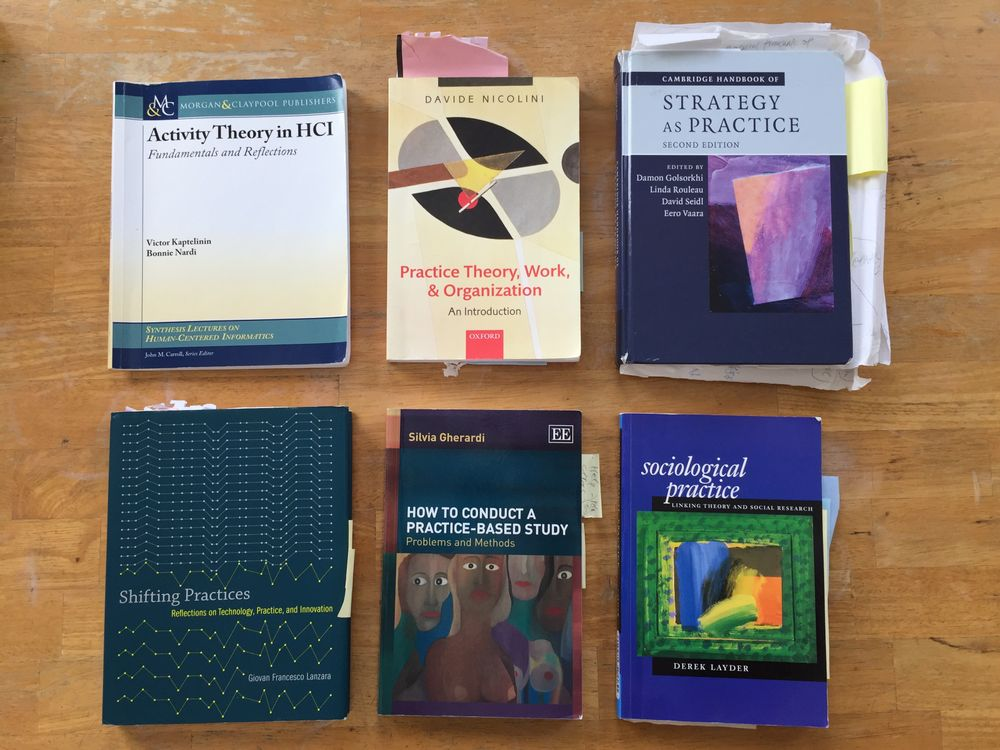Theory

We read books about Activity Theory, Practice Theory, and other social theories. The website aims to build a bridge between theory and practice.
We will start with Activity Theory and expand to Practice Theories and more theoretical accounts. We will use the theoretical concept of "Activity" for articles about Activity Theory. However, the word "Activity" should be understood as a normal word for articles about other theories.
Activity Theory, Practice Theory, and Beyond
Since 2001, a group of philosophers, sociologists, and scientists have rediscovered the practice perspective and used it as a lens to explore and examine the role of practices in human activity. Researchers called it The Practice Turn in Contemporary Theory. As Schatzki pointed out, “there is no unified practice approach”(2001, p.2). Davide Nicolini introduces the following six different ways of theorizing practice in his 2013 book Practice Theory, Work, & Organization:
- Praxeology and the Work of Giddens and Bourdieu
- Communities of Practice (Lave & Wenger, 1991)
- Activity Theory / Cultural-historical activity theory (the Marxian/Vygotskian/Leont’evian tradition)
- Ethnomethodology (Harold Garfinkel, 1954)
- The Site of Social (contemporary developments of the Heideggerian/Wittgensteinian traditions, by Theodore R. Schatzki)
- Conversation Analysis / Critical Discourse Analysis (the Foucauldian tradition)
Nicolini also pointed out, “Practice theories are fundamentally ontological projects in the sense that they attempt to provide a new vocabulary to describe the world and to populate the world with specific ‘units of analysis’; that is, practice. How these units are defined, however, is internal to each of the theories, and choosing one of them would thus amount to reducing the richness provided by the different approaches.” (2012, p.9)
Moreover, we can consider more social theories as theoretical resources for the Theories side. The diagram below points out that there are three types of theoretical resources for the Activity Analysis project:
- The Hegel-Marx-Vygotsky Activity Theories: This is the tradition of Activity Theory
- The Continental Tradition: some are mentioned by Nicolini.
- The Pragmatist Tradition: Nicolini doesn't mention it.

A Cross-boundary Mindset
The Activity Analysis project is designed to cultivate a cross-boundary mindset for responding to various social challenges.
On March 16, 2021, Oliver had a short conversation with an independent social worker and he shared files about Activity Theory and Public Sociology with him. Then, Oliver realized that there is a possible direction for the Activity U project. He designed a diagram to present his vision.

The above diagram presents three shifts of attention:
- From professional sociology to public sociology
- From individual psychology to cultural psychology
- From traditional anthropology to digital anthropology
Activity Theory, especially the Activity System model has been adopted by professional researchers from various domains. For example, organizational study scholars use the model to guide their research projects. However, most of these projects remain within academic fields. It can be seen roughly as a branch of professional sociology. The Activity U project aims to connect Activity Theory with normal knowledge workers, this vision means we are going to expand Activity Theory from professional sociology to public sociology.
Second, the unit of analysis of Activity Theory is not an isolated individual, but an activity. Andy Blunden places Activity Theory within the scope of Cultural Psychology since the origin theoretical source of Activity Theory is Cultural-historical psychology.
Third, North American anthropology has been becoming an important theoretical resource for the development of Activity Theory in North America for many years. Now it is time to embrace the newest development of anthropology in the digital age.
The Activity Analysis project expands from Activity Theory to practice theories and other theoretical approaches. However, the vision of connecting theory and practice for social innovation still remains.
